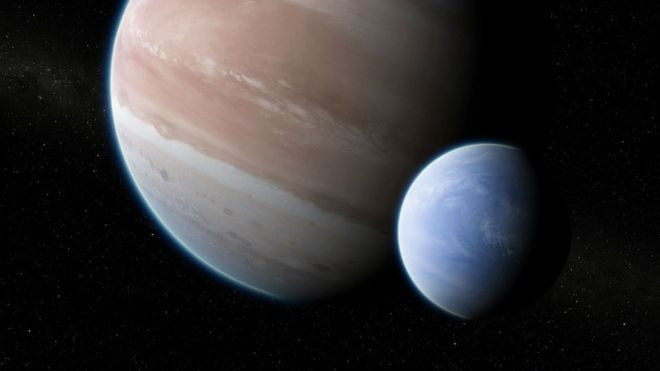Rogue Moons Could Explain Puzzling Space Phenomenon
Several massive planets have giant exomoons around them. But these planets usually expel them.
Now, an international team of astronomers, fascinated with this phenomenon, think that this ejection of exomoons could explain several astronomical mysteries. The researchers are of the view that 50 % of the ejected moons would survive immediate expulsion and avoid any subsequent collision with the planet or star and end up as quasi-planets. The team led by Mario Sucerquia, from the Universidad de Antioquia - Colombia, and Jaime Alvarado-Montes from Macquarie University in Australia, have dubbed the rogue moons as "ploonets."
The astronomers say it could explain several puzzlining phenomena as there are over 4,000 exoplanets but no single exomoon.

Alvarado-Montes said these moons would become planetary embryos or even full-fledged planets with highly eccentric orbits of their own. He said the researchers believe their existence would offer a possible explanation for several challenging results produced by NASA’s Kepler space telescope, which is no longer in active use. It includes KIC-8462852. Alvarado-Montes says this is better known as Tabby Star.
“The strange changes in its light intensity have been observed for years, but are still no understood. Ploonets could be the answer,” he said.
Researchers also believe that this could explain the evidence of cannibalism between some stars. They, according to Phys Org, said that ploonets could be a vital piece of the planetary puzzle but it is unproven. “Even if they do exist, they may deteriorate too rapidly to ever be observed,” they said.
© Copyright IBTimes 2025. All rights reserved.





















